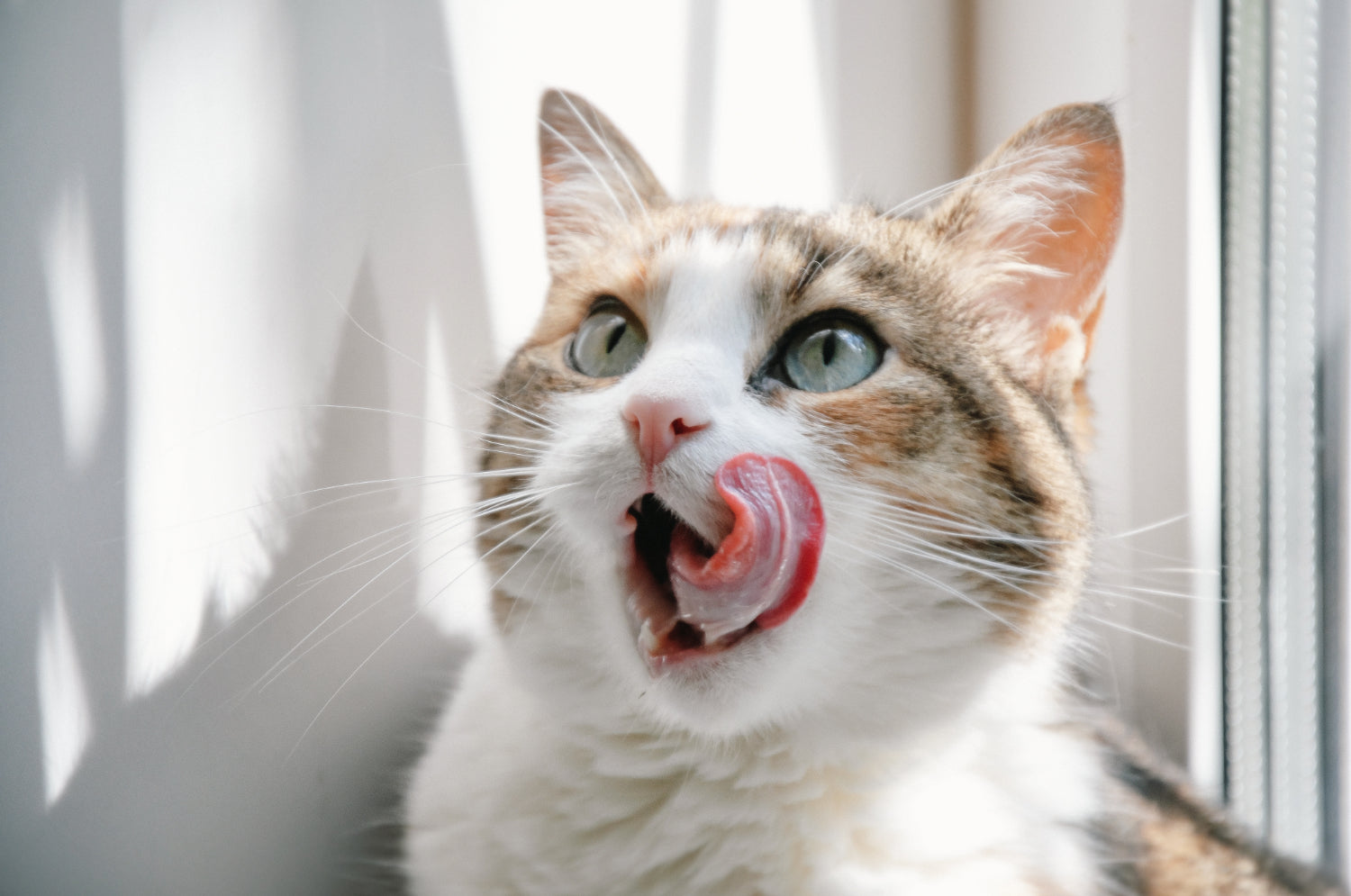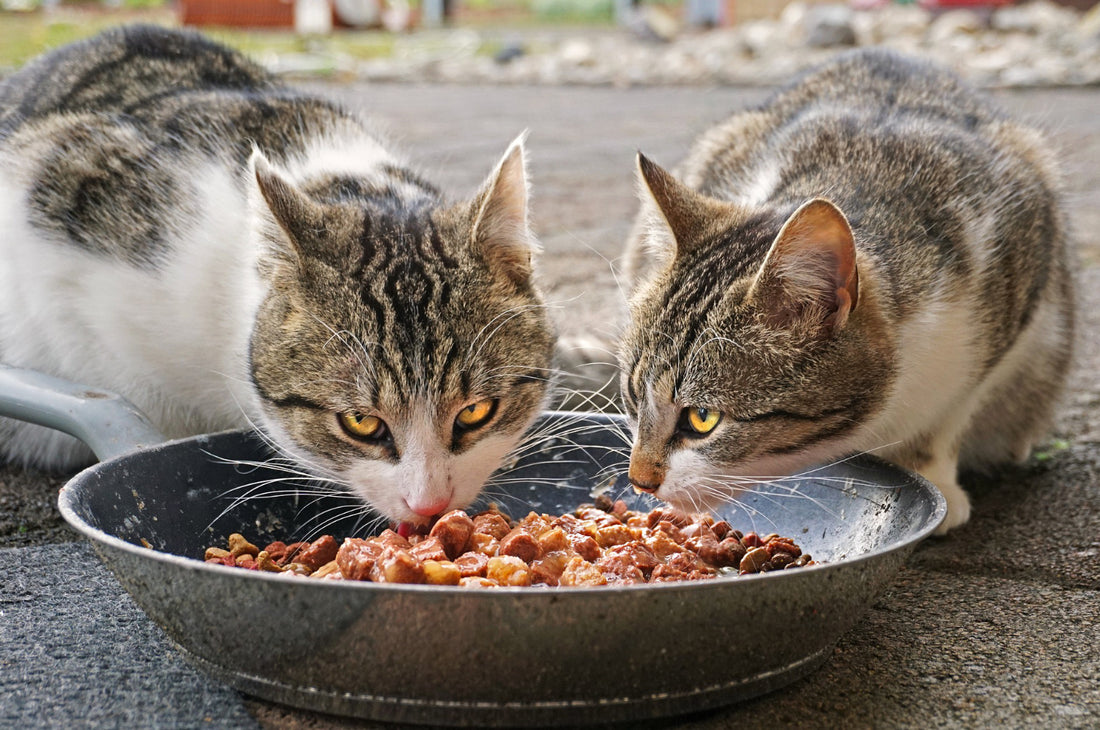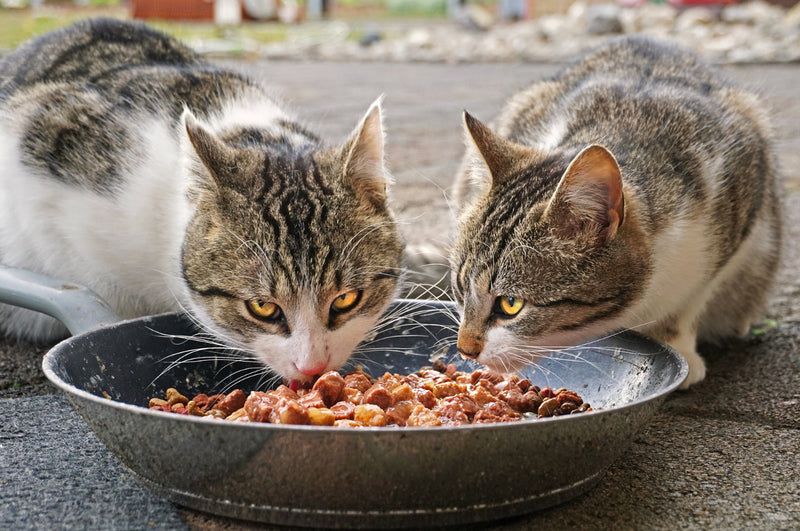Cats are notoriously picky. It’s frustrating how we seem to be constantly at the whim of whatever our cats decide they want to eat at the moment, whether trying to keep up with their changing tastes and preferences or struggling to get them to try something new. It turns out, cats aren't purposely being difficult—it's built into their nature.
Cats are “imprint eaters.” This means that whatever the first kinds of food the cat ate after nursing are "imprinted" in the cat's brain as something that is appropriate to eat. This includes things like taste, temperature, smell, texture, and even shape of the food.
Think of this as a mechanism to protect your cat from unknown, spoiled, or harmful foods. It’s so powerful that, if we try to introduce a new food with a different smell/flavor, texture, temperature, or shape, they may be wary of it because it doesn't fit into their own personal definition of food.
No wonder finding an acceptable food for our cats is such a challenge! Luckily, knowing that your cat might not be picky, but rather selective, gives us a good place to start. Let’s lay out a plan for finding the right food for your cat.
Start with a healthy diet—lots of protein and wet food are key.
Especially while you’re searching for your cat’s preferred food, it can be difficult to get them to eat enough and stay healthy. It’s important to offer the most high-quality, biologically appropriate foods you can.
What does that involve? Lots of meat. Lots of moisture.
Cats are obligate carnivores, which means they must consume animal-based nutrients—meat—to survive. Their diet requires high amounts of protein, moderate amounts of fat, and a minimal amount of carbohydrates. In addition to these macronutrients, cats also need more than a dozen vitamins, minerals, fatty acids, and amino acids. And most of these building blocks come from animal protein your cat would eat in the wild.
One way to ensure your cat is getting all the nutrients they need while enticing them to try a new food is to introduce an irresistible diet with lots of meat and wet food—canned or fresh—rather than dry kibble. If your cat is used to dry food, you may need to make the transition slowly to wet food to avoid tummy upset. You can start this transition by mixing a small amount of wet food into their dry food, or hiding some wet food under their dry food, and gradually increasing the ratio of wet to dry over time.
While this approach might work for some cats, it also has the potential to get them to stop eating completely. If a cat refuses to eat the mixed food, try offering a small amount of wet food in a separate dish next to the dry food. If they are still refusing, you can engage their curiosity by offering the new food near a favorite resting place (like on a cat tree, for example). Cats are often resistant to change (like a new smell where they expect the usual food) but are extremely curious when they find something new in an unexpected place. You could also try triggering the cat's hunting instinct by offering new food during play time, immediately after they've pounced on and 'caught' a toy.
Now, before you get them to try a new food, you need to ensure that the food is actually good for them! Finding foods that contain the following types of ingredients will ensure that their diet is healthy, while also staying as tasty as possible.
Protein
Cats require lean meats like poultry, beef, pork, and rabbit. It is extremely important that high-quality proteins like these are the primary ingredients in your cat’s diet. The closer these ingredients are to their most raw, natural state (like in canned and frozen raw food), the better they are for your cat. Animal organs—liver, kidney, and heart—are also fantastic sources of cat-appropriate protein (plus they make super tasty treats). Avoid giving skin tissue and extremely fatty meat to your cat, as they are overly fatty and offer no real nutritional value. Salty and seasoned meat should also be avoided.
Fat
When it comes to fat content, look for foods that contain healthy fats like Omega-3 and Omega-6 fatty acids. These help support your cat's immune system, coat health, and brain function. As a general rule, aim for wet foods that are at least eight percent fat, as this usually meets your cat’s Omega-6 requirements. Because your cat’s ideal health requires balanced omegas, it’s a great idea to use a fish oil supplement that is high in Omega-3.
Carbs
As for carbohydrates, cats don't really need them in their diet. However, a small amount of carbs can help add bulk and fiber to their meal, making it more satiating. Avoid formulas with fillers like corn, wheat, and soy when choosing cat food. These ingredients can lead to inflammation and digestive problems.

Tips and tricks to get your picky cat to eat.
If you've tried to make their food as irresistible as possible and your cat is still unwilling to eat enough, there are a few other tricks you can try. If your cat is interested by new food offerings, but loses interest quickly, here are some suggestions:
- Warm up their food. This will release the meal’s aroma and make it more appealing to your cat.
- Add some water. A little bit of water can go a long way in making cat food more palatable for them—and hydration is always important for cats.
- Try a different protein source. If your cat is used to chicken, try turkey or fish. Sometimes having a rotating diet of complementary proteins is enough to keep your cat interested.
- Add some catnip. A sprinkle of catnip may be all it takes to get your cat's attention—and appetite.
- Try different flavors of food to see what your cat likes. Similarly, offering multiple textures like pate, shreds, chunks, and gravy helps to keep your cat stimulated.
- Your cat’s issue might not be with their food at all, but with their water. Try offering a variety of water dishes, including one that's elevated for ease of access. Keep their water fresh and away from the food. Some cats may be hesitant to drink water that's been "contaminated" by being too close to food, or stagnant for too long. Introducing a water fountain bowl is a good way of keeping water fresh enough for your picky cat.
- Place food in several locations around the house for cats that like to roam. Some cats may be hesitant to eat if their food dish is in a high-traffic area or hard-to-reach location.
On the other hand, your cat could be absolutely disinterested in anything new, and avoid it all-together. If this is the case, try these suggestions:
- Pay attention to the three T's- taste, texture, and temperature. Your cat will be food imprinted on these elements, so try to change no more than one of those three things at a time.
- Hide a small amount of the new food under the usual food, so that your cat “discovers” it while eating. Once they are eating it rather than leaving it behind, gradually increase the amount each day.
- Place a bit of the new food in their usual bowl outside of mealtime and place the bowl somewhere different than normal (in a different room of the house). This allows the cat to come across the food while “hunting” through the house and is surprisingly effective at triggering their instinct to eat.
If you've tried all of these tips and your cat is still not eating, it's time to consult your veterinarian. Unlike dogs who will give in eventually and eat whatever you put in front of them, if your cat doesn’t think that the food you’re offering is fit to eat, they will starve themselves. Going 36 hours without food is all it would take to potentially cause Hepatic Lipidosis and liver failure. Your vet can help you determine if your cat is really just being picky, or if there's an underlying health condition causing your cat's lack of appetite.
A word of caution
Cats, being the famously fussy eaters they are, make it hard to find healthy food that they won't turn their nose up at. However, you should be careful when you finally find one that seems to work. Many cat foods seem like a good solution because they are made with cheap fillers and low-quality ingredients that taste great, but can also cause health problems.
To find the best combination of healthy ingredients and great palatability, look for something like our Kahoots Café de Cat recipes. We've gone through extensive palatability studies to ensure our recipes are the tastiest on the market. Our foods are focused on simple, honest ingredients like chopped sardines, red meat and albacore tuna, calamari rings, and tiny prawns. Our cat food is high in moisture with exactly the added vitamins and minerals that cats need for a complete and balanced diet. This is in comparison to more traditional meatloaf or mystery meat formulas that you might find in other foods.
Try, try again
If you're struggling to find food that your picky feline loves, don't worry! You're not alone. It's natural for them to be picky eaters. Keep working on it. Try enticing them with different flavors and textures. Ensure that they feel safe enough to eat. Give them plenty of fresh water. Eventually, even the pickiest of cats should come 'round. However, if they're still refusing to eat after a few days of trying different foods, it might be time to take them in for a checkup at the vet.
Thanks for reading our tips on how to get your picky cat to eat! If you have any questions, we're always happy to answer them! You can give us a call, shoot us an email, or stop by your local Kahoots Pet and Feed store.


